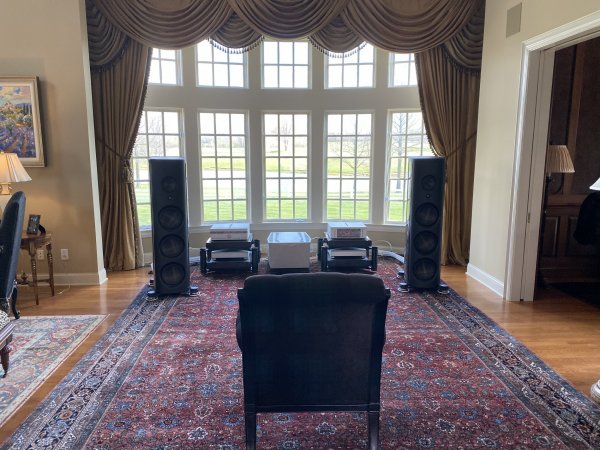FYI, the TPLink RE650 is a dual band (2.4GHz & 5GHz bands) access point/extender that comes standard with a mains wall plug, internal 5V DC supply, 4 antennae, ability to deactivate all LEDs, and SW control via the TPLInk app Tether. As standard, the unit is plugged into a wall socket and the (cheap as chips) internal SMPS produces the 5V necessary to run the unit. Prior to deciding on using the unit as part of my network I compared its W-Fi performance to standard CAT5 and Synergistic Research Active SE Cat6 10m ethernet cables. The Wi-fi was superior. Initially I built my network based on the ISP supplied modem/router sending a wi-fi signal to the RE650 which was connected to my then Innuos Zenith SE server by a 1m SR Atmosphere X Ref ethernet cable. Further development of the network included placing network devices on Atacama platforms to minimize vibration and powering devices with Sean Jacob’s DC3s. Eventually the RE 650 was the only device still powered by its own internal SMPS.
Using the standard Tether SW, I could switch off the 2.4MHz band, switch off the 5MHz band polling, switch off the LEDs and make the hardwired Innuos the only client.
Given the success I’d had with LPSs and vibration control I decided to modify the RE650 to bring it into line. I removed the internal power supply and the wall plug and used the space to install a single mounting point. I then built an anti-vibration wall mount, using Polymethyl methacrylate, (Perspex). I glued a single button mount to the Perspex to hold the RE650 and attached nitrile o-rings to each corner. 4 cup hooks in the wall hold the o-rings which are under minimal tension and therefore transmit no vibration from the wall, while the antennae are held in the same orientation as the wall plug mount. Sean Jacobs built a connector from the RE650’s circuit board power input to a chassis mounted socket, so I can now attach any DC cable using a standard 2.1mm barrel connector. An SJ DC3 provides the required 5V and the current is carried to the RE650 over a Nenon designed Mundorf Silver/Gold JSSG DC cable. The DC3 sits on a small Atacama platform.
On the router side, I installed a 3 band TPLink Archer 5400 which I can also control via the Tether App. One of its 5GHz bands is dedicated to audio, with the RE650 as the only client. The Router is also powered by a DC3 with Mundorf Silver/Gold DC cable.
Photos show DC3s for AQVoxSE switch and RE650 access point on an Atacama mini rack; the RE650 on its anti-vibration mount, a top view of RE650 showing its single mounting pint and Nenon’s Mundorf SilverGold DC cable demonstrating its ability to hold a shape, allowing stress free mounting
Could you please be so kind to let us know how the vibro-isolating anthenna infuenced the SQ in your system?
did you repeat the same for other things like router, supply or anything else ?











